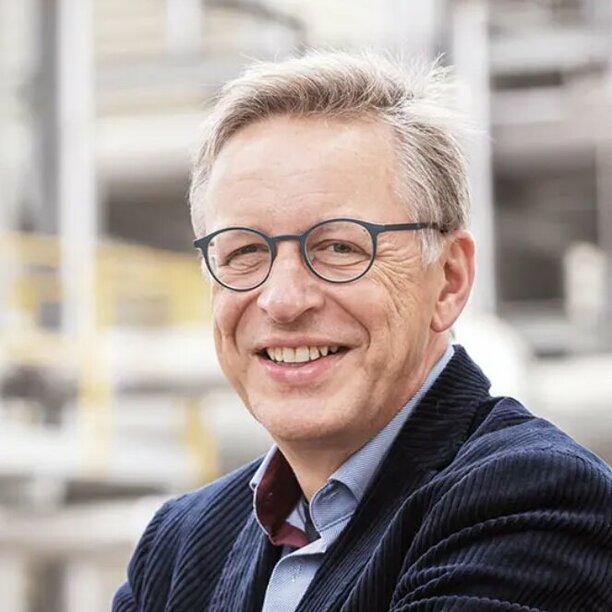Collaborate for a sustainable chemical industry
‘TU/e and Chemelot are a mere 70 kilometers apart. It makes perfect sense for the two to collaborate.’ Arnold Stokking, Managing Director of knowledge center Brightsite has a clear mission. ‘As a country, we have the perfect knowledge position to help the chemical industry transition to sustainable energy and feedstock sources. EIRES could and should play an important role in that.’
Where chemistry as a sector has been based on the same basic principles over the past decades, now the time has come for the sector to engage in radical innovation, states Arnold Stokking. ‘The chemical industry is at the verge of a large transition. They need to embrace a high tech systems and materials approach, which is what the Eindhoven region excels in. To realize a sustainable, competitive industry, we need system thinking and system engineering, plus a radical change in materials and processes. I am convinced that EIRES researchers have an important role to play in that.’
Personal mission
Stokking represents knowledge center Brightsite, a public-partnership between Brightlands Chemelot Campus, Engineering company Sitech Services, TNO, and Maastricht University. The center focuses on making the chemical industry more sustainable at the Chemelot site and other locations. ‘At Brightsite we take a TRL 9 to 1 approach,’ Stokking says. So called Technology Readiness Levels refer to the level of maturity of a technology, ranging from 1 (fundamental research phase) to 9 (fully commercialized). ‘We look from an industrial point of view back into the knowledge chain to identify what is needed in terms of research and development, and then we set up collaborations and facilitate demonstrators to close this chain.’ At the moment, Maastricht University is responsible for the fundamental research part. TNO is involved in the validation of new technology for specific applications. ‘We could do with a technical university for complementary topics, and it is my personal mission to get Eindhoven on board,’ Stokking says.

For Chemelot, the transition toward sustainable feedstock resources is perhaps even more urgent than the electrification of the production processes, he says. ‘About 80 percent of all of the fossils now flowing into our campus in Geleen is transformed into products, so that is where the big wins are. TU/e’s expertise in synthetic platforms for fuels and feedstock would be most welcome to aid this transition.’
Setting up labs
As an example of Brightsite’s activities, Stokking refers to the plasmalab that was opened in 2021 at the Chemelot campus. ‘That is the result of a collaboration with DIFFER and Richard van de Sanden. Former DIFFER group leader Gerard van Rooij, who is now a professor at Maastricht University, is the lead researcher there. In the lab, we apply the knowledge of plasmas as developed at DIFFER to split and recombine molecules as an energy efficient alternative for current fossil based high temperature processes.’
Brightsite explicitly aims for parallel trajectories, where both industry, TNO and academia are working on different aspects of a promising technology at the same time. ‘We simply do not have the time to go for a sequential approach. We have to apply what we have right now, and improve on it on the fly.’ This required speed of action not only has to do with the alarming rate of climate change, but also with issues of employment, says Stokking. ‘You see that the big public investors like pension funds are already retracting from fossil based industry. So if we want to stay competitive, we have to make the change fast.’
Stokking can name several topics, both within and outside the core research of EIRES, that could be of interest for a collaboration between Brightsite and TU/e. ‘For example, I see a lot of potential in the Eindhoven approach of using salts to store heat. It would be very interesting to explore how we could use the residual heat of our industrial processes to power chemical processes, or perhaps even to heat the houses in the surrounding neighborhood. We are already in contact with Cellcius to see what we could do there. In addition, we are actively scouting for new promising developments we could turn into demonstrators at our campus. I warmly invite EIRES researchers to come and visit us in Geleen and to explore where we can make a difference together.’
